Opinion & Analysis
How your shoulder blades can affect your club face: Part 2
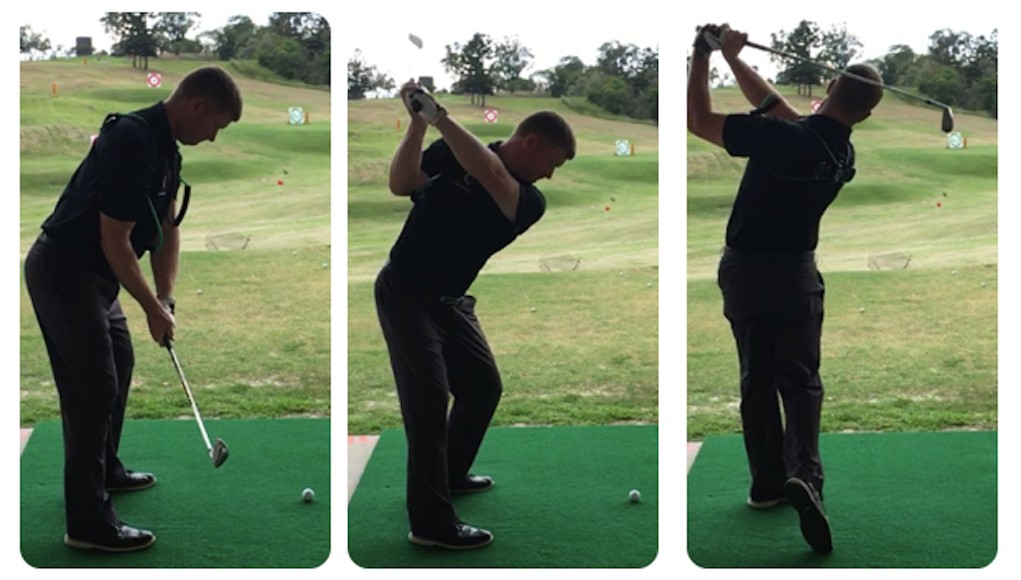
This article was co-authored with Chris Gibson, an Australian AAA-rated golf professional. His teaching philosophy focuses on simplicity and longevity in the game, providing help for golfers at all levels. He focuses on interpreting information from technology and applying it in the simplest way possible to help his students
Before you begin reading this article, make sure you have read Part 1 in this series, otherwise not much of this is going to make sense! Here, in Part 2, Chris and I are going to offer solutions that will help you to develop better stability and control of those all-important shoulder blades.
But first, in response to requests for a more detailed photographic explanation, we will also show you the good and bad of scapula-positioning when standing upright and in a golf setup. The two models featured are an underdeveloped teen who has poor scapula control, and a top-100 player in the world who has five years of scapula stability training under his belt (in addition to other training).
You can see that in Pic 1; the teen had a lack of bulk and activation in the muscles surrounding the scapula and it appears to poke through the skin. This leads to the right shoulder sitting very low and internally rotated at set up (Pics 2 and 3), which as we suggested in Part 1 of this article, makes it ultimately more difficult to control the clubface consistently. Where as the more trained athlete (whilst still not perfect: right shoulder is low) holds his scapula better in standing and set up, which we believe gives him a better chance to repeatedly control the clubface efficiently in his action.
Pic 1
Pic 2
Pic 3
Hopefully that clears things up for you and we can finally offer you a solution to training those scaps. The scapula is notoriously difficult to control; instinctively, we generally have poor awareness and usually aren’t very strong or stable in the muscles that surround it. Training of these muscles can be be tricky and complicated, so we have tried to simplify it for you by delivering two sets of simple exercises that we use as a starting point for many of the players (elite or otherwise) that we work with.
These simple drills can be done using either a piece of rubber tubing or more ideally, the training piece you will see in the photos called the Gravity Fit Thoracic Pro.
We have created one mini program for home and one mini program for the practice range. The movements are simple and don’t require any kind of in-depth anatomical knowledge to perform them correctly. We have supplied photos and descriptions of how to perform the movements, but also welcome questions and queries.
Home Exercises
Circuit – 3 Rounds – 30 seconds of rest between exercises.
- Tubing Push Out – Thoracic Pro – 12 reps
- Wall Push Up – Thoracic Pro – 12 reps
- Set Up Posture Drill – Thoracic Pro – 45 secs
- Waist to Waist Turns – Thoracic Pro – 10 reps
1. Tubing Push Out
- Purpose: Training scapula awareness, control and endurance
- Method: Stand tall, press arms forward keeping shoulder blades and spine connected to back paddle, turn palms up as you near end range. Control back to start position and repeat.
2. Wall Push Up
- Purpose: Training scapula awareness, control and endurance.
- Method: Stand tall, lower your chest toward the wall keeping your shoulder blades and spine connected to back paddle. Control back to start position and repeat.
3. Set Up Posture Drill
- Purpose: Training scapula awareness, control and endurance in golf setup.
- Method: In golf set up with hands in tubing, turn shoulders/elbows/hands outwards. Gently pulse hands against tubing.
4. Waist to Waist Turns
Purpose: Training scapula awareness, control and endurance in rotation movement pattern.
Method: In golf setup with hands in tubing, turn shoulders/elbows/hands outwards. Turn into backswing then turn into follow through. Maintain shoulder/elbow/hand positioning all the way through.
 Range Drills
Range Drills
Circuit – 10 rounds – 20 secs rest between drills
- Set Up Posture Drill – Thoracic Pro – 20 secs
- Waist to Waist Turns – Thoracic Pro – 10 reps
- Preset, Backswing to Impact – 5 reps
- Preset, backswing to hit ball – 3 reps
1. Set Up Posture Drill
- Purpose: Training scapula awareness, control and endurance in golf setup.
- Method: In golf set up with hands in tubing, turn shoulders/elbows/hands outwards. Gently pulse hands against tubing.
2. Waist to Waist Turns
- Purpose: Training scapula awareness, control and endurance in rotation movement pattern.
- Method: In golf set up with hands in tubing, turn shoulders/elbows/hands outwards. Turn into backswing then turn into follow through. Maintain shoulder/elbow/hand positioning all the way through.
3. Preset, Backswing to Impact
- Purpose: Practice first move, top of backswing and back to impact in controlled manner. Opportunity to discover what positions feel like with quality scapular control under low load (moving slowly).
- Method: Set club parallel to ground with good shoulder position (connected scapulae), slowly swing up to top of 3/4 backswing and back to impact.
4. Preset, backswing to hit ball
- Purpose: Taking the movement patterns and control of the scapula and applying it to hitting balls.
- Method: Set club parallel to ground with good shoulder position (connected scapulae), complete rest of swing and impact at normal speed
The equipment featured in the exercises is called a Gravity Fit Thoracic Pro. It was conceived and designed by a world leading scientist in the field of physiotherapy. Designed for the specific task of training stability and strength in the shoulder girdle and scapula, it also works really nicely when applying that quality to dynamic rotation in a golf swing context. We love using it with our students and you can get one here: www.golffitproshop.com.
Opinion & Analysis
The 2 primary challenges golf equipment companies face

As the editor-in-chief of this website and an observer of the GolfWRX forums and other online golf equipment discourse for over a decade, I’m pretty well attuned to the grunts and grumbles of a significant portion of the golf equipment purchasing spectrum. And before you accuse me of lording above all in some digital ivory tower, I’d like to offer that I worked at golf courses (public and private) for years prior to picking up my pen, so I’m well-versed in the non-degenerate golf equipment consumers out there. I touched (green)grass (retail)!
Complaints about the ills of and related to the OEMs usually follow some version of: Product cycles are too short for real innovation, tour equipment isn’t the same as retail (which is largely not true, by the way), too much is invested in marketing and not enough in R&D, top staffer X hasn’t even put the new driver in play, so it’s obviously not superior to the previous generation, prices are too high, and on and on.
Without digging into the merits of any of these claims, which I believe are mostly red herrings, I’d like to bring into view of our rangefinder what I believe to be the two primary difficulties golf equipment companies face.
One: As Terry Koehler, back when he was the CEO of Ben Hogan, told me at the time of the Ft Worth irons launch, if you can’t regularly hit the golf ball in a coin-sized area in the middle of the face, there’s not a ton that iron technology can do for you. Now, this is less true now with respect to irons than when he said it, and is less and less true by degrees as the clubs get larger (utilities, fairways, hybrids, drivers), but there remains a great deal of golf equipment truth in that statement. Think about it — which is to say, in TL;DR fashion, get lessons from a qualified instructor who will teach you about the fundamentals of repeatable impact and how the golf swing works, not just offer band-aid fixes. If you can’t repeatably deliver the golf club to the golf ball in something resembling the manner it was designed for, how can you expect to be getting the most out of the club — put another way, the maximum value from your investment?
Similarly, game improvement equipment can only improve your game if you game it. In other words, get fit for the clubs you ought to be playing rather than filling the bag with the ones you wish you could hit or used to be able to hit. Of course, don’t do this if you don’t care about performance and just want to hit a forged blade while playing off an 18 handicap. That’s absolutely fine. There were plenty of members in clubs back in the day playing Hogan Apex or Mizuno MP-32 irons who had no business doing so from a ballstriking standpoint, but they enjoyed their look, feel, and complementary qualities to their Gatsby hats and cashmere sweaters. Do what brings you a measure of joy in this maddening game.
Now, the second issue. This is not a plea for non-conforming equipment; rather, it is a statement of fact. USGA/R&A limits on every facet of golf equipment are detrimental to golf equipment manufacturers. Sure, you know this, but do you think about it as it applies to almost every element of equipment? A 500cc driver would be inherently more forgiving than a 460cc, as one with a COR measurement in excess of 0.83. 50-inch shafts. Box grooves. And on and on.
Would fewer regulations be objectively bad for the game? Would this erode its soul? Fortunately, that’s beside the point of this exercise, which is merely to point out the facts. The fact, in this case, is that equipment restrictions and regulations are the slaughterbench of an abundance of innovation in the golf equipment space. Is this for the best? Well, now I’ve asked the question twice and might as well give a partial response, I guess my answer to that would be, “It depends on what type of golf you’re playing and who you’re playing it with.”
For my part, I don’t mind embarrassing myself with vintage blades and persimmons chasing after the quasi-spiritual elevation of a well-struck shot, but that’s just me. Plenty of folks don’t give a damn if their grooves are conforming. Plenty of folks think the folks in Liberty Corner ought to add a prison to the museum for such offences. And those are just a few of the considerations for the amateur game — which doesn’t get inside the gallery ropes of the pro game…
Different strokes in the game of golf, in my humble opinion.
Anyway, I believe equipment company engineers are genuinely trying to build better equipment year over year. The marketing departments are trying to find ways to make this equipment appeal to the broadest segment of the golf market possible. All of this against (1) the backdrop of — at least for now — firm product cycles. And golfers who, with their ~15 average handicap (men), for the most part, are not striping the golf ball like Tiger in his prime and seem to have less and less time year over year to practice and improve. (2) Regulations that massively restrict what they’re able to do…
That’s the landscape as I see it and the real headwinds for golf equipment companies. No doubt, there’s more I haven’t considered, but I think the previous is a better — and better faith — point of departure when formulating any serious commentary on the golf equipment world than some of the more cynical and conspiratorial takes I hear.
Agree? Disagree? Think I’m worthy of an Adam Hadwin-esque security guard tackle? Let me know in the comments.
@golfoncbs The infamous Adam Hadwin tackle ? #golf #fyp #canada #pgatour #adamhadwin ? Ghibli-style nostalgic waltz – MaSssuguMusic
Podcasts
Fore Love of Golf: Introducing a new club concept

Episode #16 brings us Cliff McKinney. Cliff is the founder of Old Charlie Golf Club, a new club, and concept, to be built in the Florida panhandle. The model is quite interesting and aims to make great, private golf more affordable. We hope you enjoy the show!
Opinion & Analysis
On Scottie Scheffler wondering ‘What’s the point of winning?’

Last week, I came across a reel from BBC Sport on Instagram featuring Scottie Scheffler speaking to the media ahead of The Open at Royal Portrush. In it, he shared that he often wonders what the point is of wanting to win tournaments so badly — especially when he knows, deep down, that it doesn’t lead to a truly fulfilling life.
View this post on Instagram
“Is it great to be able to win tournaments and to accomplish the things I have in the game of golf? Yeah, it brings tears to my eyes just to think about it because I’ve literally worked my entire life to be good at this sport,” Scheffler said. “To have that kind of sense of accomplishment, I think, is a pretty cool feeling. To get to live out your dreams is very special, but at the end of the day, I’m not out here to inspire the next generation of golfers. I’m not out here to inspire someone to be the best player in the world, because what’s the point?”
Ironically — or perhaps perfectly — he went on to win the claret jug.
That question — what’s the point of winning? — cuts straight to the heart of the human journey.
As someone who’s spent over two decades in the trenches of professional golf, and in deep study of the mental, emotional, and spiritual dimensions of the game, I see Scottie’s inner conflict as a sign of soul evolution in motion.
I came to golf late. I wasn’t a junior standout or college All-American. At 27, I left a steady corporate job to see if I could be on the PGA Tour starting as a 14-handicap, average-length hitter. Over the years, my journey has been defined less by trophies and more by the relentless effort to navigate the deeply inequitable and gated system of professional golf — an effort that ultimately turned inward and helped me evolve as both a golfer and a person.
One perspective that helped me make sense of this inner dissonance around competition and our culture’s tendency to overvalue winning is the idea of soul evolution.
The University of Virginia’s Division of Perceptual Studies has done extensive research on reincarnation, and Netflix’s Surviving Death (Episode 6) explores the topic, too. Whether you take it literally or metaphorically, the idea that we’re on a long arc of growth — from beginner to sage elder — offers a profound perspective.
If you accept the premise literally, then terms like “young soul” and “old soul” start to hold meaning. However, even if we set the word “soul” aside, it’s easy to see that different levels of life experience produce different worldviews.
Newer souls — or people in earlier stages of their development — may be curious and kind but still lack discernment or depth. There is a naivety, and they don’t yet question as deeply, tending to see things in black and white, partly because certainty feels safer than confronting the unknown.
As we gain more experience, we begin to experiment. We test limits. We chase extreme external goals — sometimes at the expense of health, relationships, or inner peace — still operating from hunger, ambition, and the fragility of the ego.
It’s a necessary stage, but often a turbulent and unfulfilling one.
David Duval fell off the map after reaching World No. 1. Bubba Watson had his own “Is this it?” moment with his caddie, Ted Scott, after winning the Masters.
In Aaron Rodgers: Enigma, reflecting on his 2011 Super Bowl win, Rodgers said:
“Now I’ve accomplished the only thing that I really, really wanted to do in my life. Now what? I was like, ‘Did I aim at the wrong thing? Did I spend too much time thinking about stuff that ultimately doesn’t give you true happiness?’”
Jim Carrey once said, “I think everybody should get rich and famous and do everything they ever dreamed of so they can see that it’s not the answer.”
Eventually, though, something shifts.
We begin to see in shades of gray. Winning, dominating, accumulating—these pursuits lose their shine. The rewards feel more fleeting. Living in a constant state of fight-or-flight makes us feel alive, yes, but not happy and joyful.
Compassion begins to replace ambition. Love, presence, and gratitude become more fulfilling than status, profits, or trophies. We crave balance over burnout. Collaboration over competition. Meaning over metrics.
Interestingly, if we zoom out, we can apply this same model to nations and cultures. Countries, like people, have a collective “soul stage” made up of the individuals within them.
Take the United States, for example. I’d place it as a mid-level soul: highly competitive and deeply driven, but still learning emotional maturity. Still uncomfortable with nuance. Still believing that more is always better. Despite its global wins, the U.S. currently ranks just 23rd in happiness (as of 2025). You might liken it to a gifted teenager—bold, eager, and ambitious, but angsty and still figuring out how to live well and in balance. As much as a parent wants to protect their child, sometimes the child has to make their own mistakes to truly grow.
So when Scottie Scheffler wonders what the point of winning is, I don’t see someone losing strength.
I see someone evolving.
He’s beginning to look beyond the leaderboard. Beyond metrics of success that carry a lower vibration. And yet, in a poetic twist, Scheffler did go on to win The Open. But that only reinforces the point: even at the pinnacle, the question remains. And if more of us in the golf and sports world — and in U.S. culture at large — started asking similar questions, we might discover that the more meaningful trophy isn’t about accumulating or beating others at all costs.
It’s about awakening and evolving to something more than winning could ever promise.












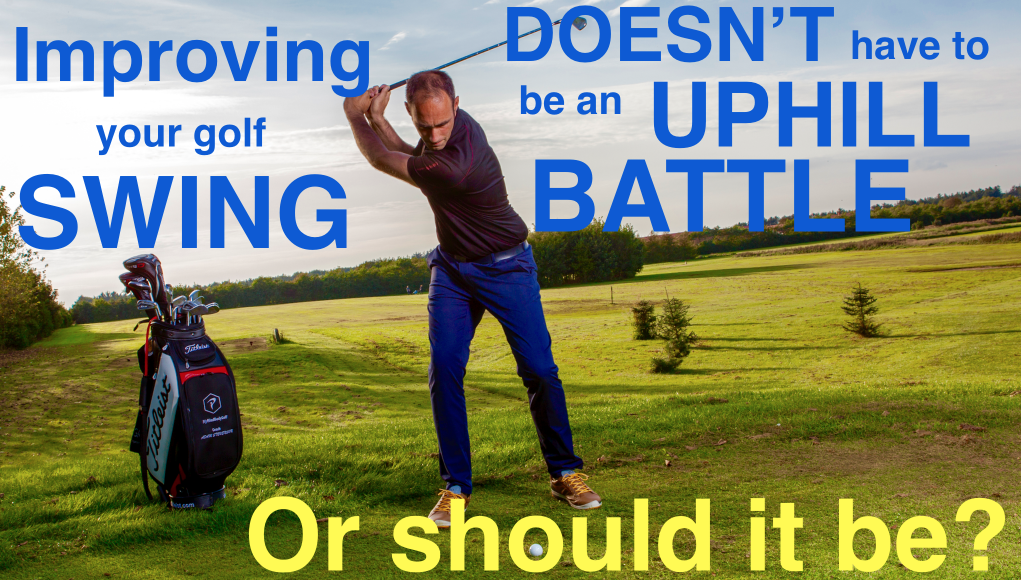
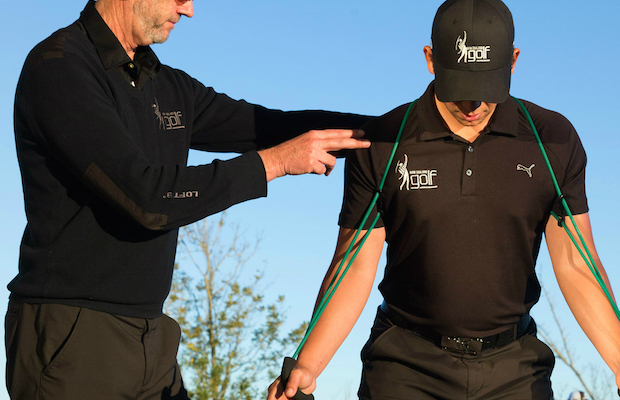
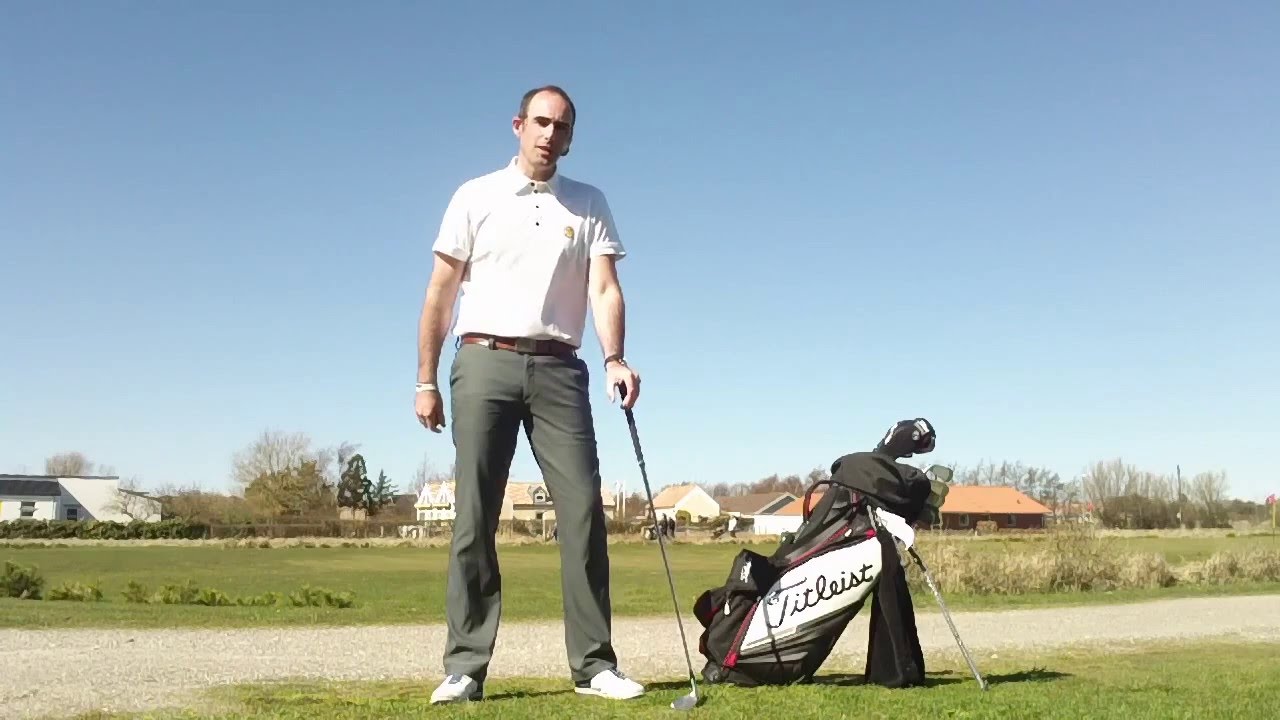

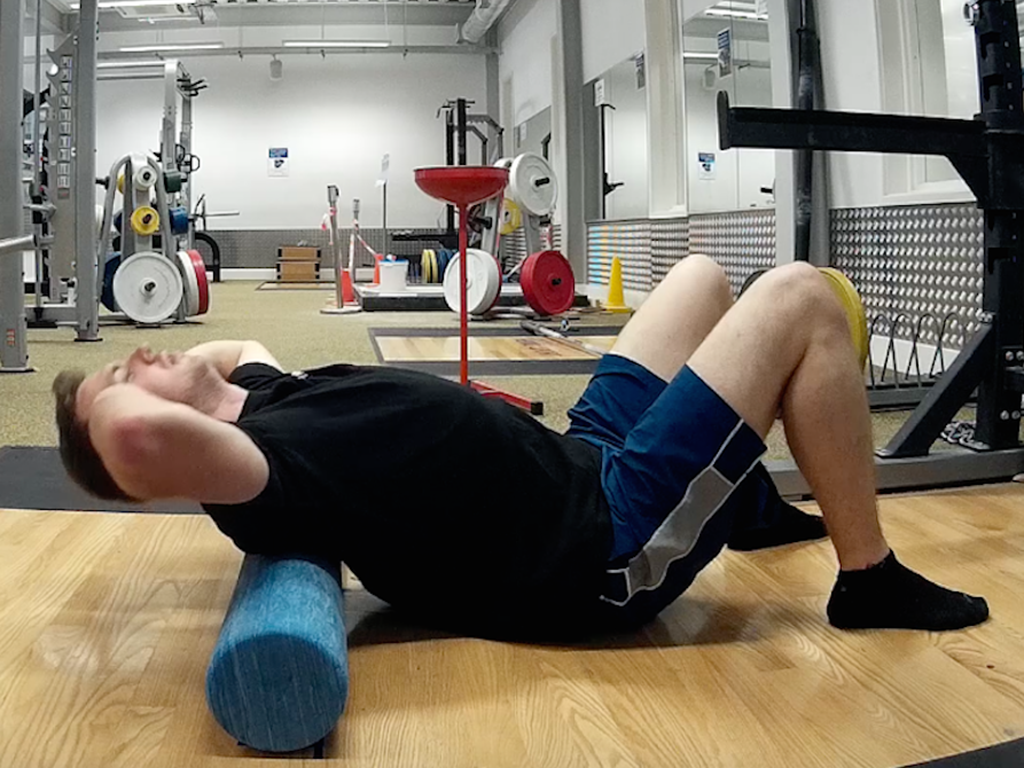
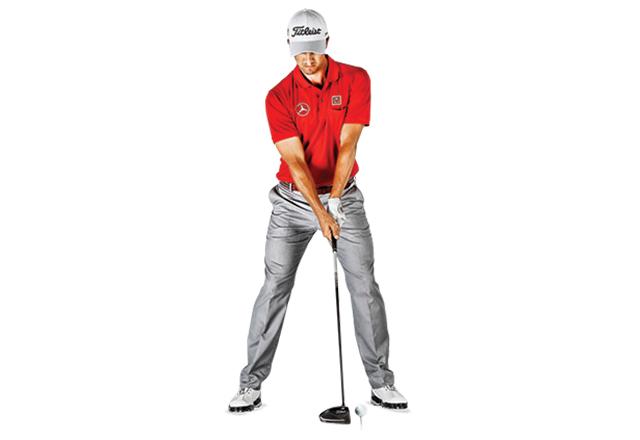








Tom
Apr 19, 2024 at 1:52 pm
How is it possible for the right shoulder not to be lower at address if the right hand is below the l eft on the club?
Loui Cuppari
Aug 13, 2016 at 5:34 pm
I’ve been working on scapula control and upper arm connection for about a year now and ball striking has improved considerably after 30 odd years of frustration. I believe setting the right scapula is the main key along with connection of the upper left arm.
I think getting this scapula/upper arm control or bracing/setting right is the swing of the future.
Allan
Feb 10, 2016 at 2:05 pm
I agree with Chris. It is not super clear to me what is correct and exactly why the scapula is having such a dramatic impact of club face at impact.
Lou
Mar 19, 2016 at 12:50 am
I believe it allows you to control the lift of the club and horizontal movement (thoracic rotation) using just your “scap muscles”….Doing this gives you a better awareness of the club face is throughout the swing because you won’t be using your hands for rerouting the club head into a proper inside path….the hands can do their job of just controlling the dynamic loft and face position (the handle)….
Mike
Jan 27, 2016 at 8:31 pm
I’ve been working out with the Golf fit regimen for a 6 months and it’s really helped my rotation and flexibility. I’m 63 and my game is improving from 22 to 15 handicap over this past year. I didn’t buy this tubing thingy because I think it’s over priced and you can do it with tubing loops effectively. I just want to say that they are knowledgeable and have helped my game.
Chris
Jan 25, 2016 at 10:48 am
If internal rotation is bad, does that mean the shoulder should be externally rotated at address or during the swing? It is unclear to me from the article what the correct movement is. Any elaboration? Thanks.
rob campbell
Jan 25, 2016 at 9:46 am
If a top 100 player has been working on “scapula stability” for 5 years and hasn’t got it right, why would any normal person think this idea is worth his time? You’ve taken a wrong turn.
Ne26
Jan 24, 2016 at 10:48 am
Sooooo turns out to be another article written by someone pushing their own product.
WRX is rolling in that advertising money.
Billy
Jan 25, 2016 at 8:49 am
Why not?? Seems like you don’t quite understand the article(which is quite interesting)… Lame response